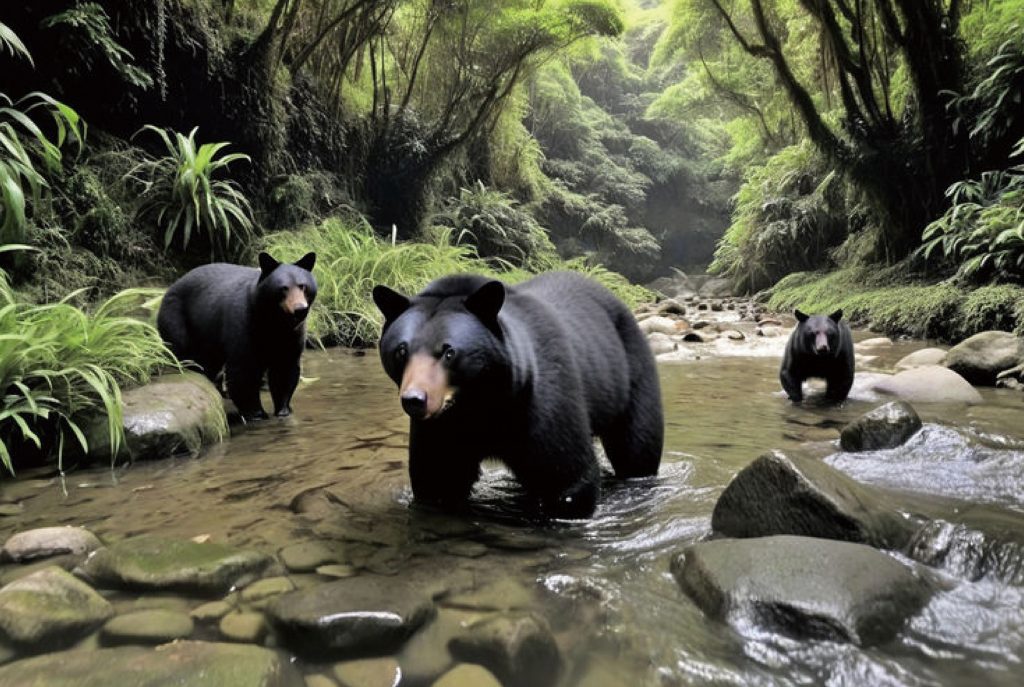「臺灣文化與永續發展:AI視覺創作之明信片設計競賽」
佳作展示
「Taiwan’s Ecological Wake-up Call」
作品介紹


佳作
小白–郭承昀
朝陽科技大學 視覺傳達設計系
作品英文描述
Through these photos, a story unfolds depicting two contrasting worlds within Taiwan’s jungles. The first image reveals a harsh reality: despite the inherent beauty of Taiwan’s natural jungle scenery, it is marred by the presence of human-made garbage, and the sight of emaciated Taiwanese black bears, deprived of food and bleeding, vividly illustrates the ecological toll of human activity.
In contrast, the second picture presents a scene of hope. The stream flows clear and pure, a testament to the ecosystem’s resilience. Towering trees frame the scene, providing a habitat for numerous Taiwanese black bears and other wildlife. Here, amidst the abundance of nature, the animals thrive, their contentment underscoring the potential for harmony between humans and nature in Taiwan’s jungles.
創作動機
My aim is to capture the stark contrast between the destructive impact of human activity and the potential for harmonious coexistence between humans and nature in Taiwan’s jungles. The first image sounds an alarm, illustrating the consequences of deforestation and pollution on wildlife. It prompts viewers to reflect on their actions and the urgent need for conservation efforts.
Conversely, the second image offers a glimpse of what could be—a vibrant, life-filled ecosystem. It inspires hope and encourages viewers to envision a future where humans coexist harmoniously with nature, respecting its delicate balance and nurturing its vitality. Through these contrasting scenes, I hope to spark a sense of responsibility and motivate people to take action to protect Taiwan’s natural landscapes for future generations.
心得與反思
Reflecting on these images, I am struck by the profound contrast they depict between human intervention in nature and the potential for a harmonious relationship between mankind and the environment. The first photograph serves as a stark reminder of the detrimental impact of human activities. It evokes a sense of urgency, compelling us to reassess our relationship with the natural world.
Conversely, the second image offers a glimpse into a hopeful future—a future where nature thrives and wildlife flourishes amidst clear streams and dense forests. It inspires me to believe in the possibility of coexistence between humans and nature, where mutual respect and preservation of biodiversity are paramount.
These contrasting scenes prompt me to reflect on the importance of conservation efforts and sustainable practices. They remind me that while human actions have the power to inflict harm, they also have the potential to foster positive change. As stewards of the Earth, we have a responsibility to strive towards a future where nature’s beauty is preserved, and where all beings can thrive in harmony.
